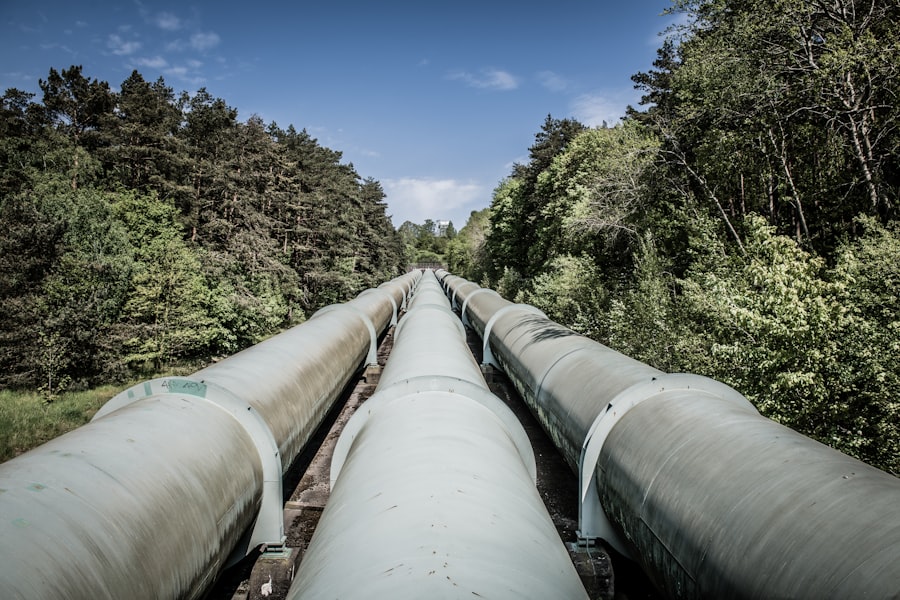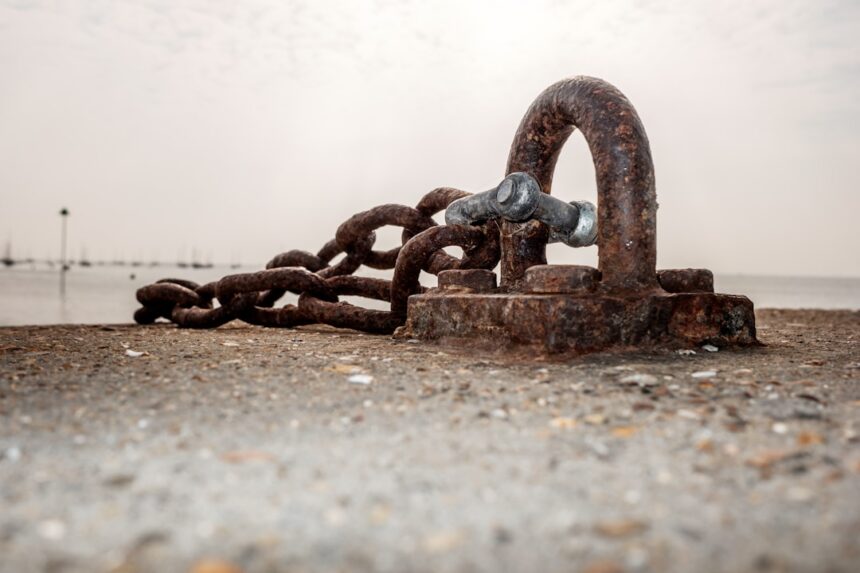Subsea pipelines are critical infrastructures that facilitate the transportation of oil, gas, and other resources across vast oceanic expanses. These pipelines, often laid on the seabed or buried beneath it, connect offshore production facilities to onshore processing plants, playing a vital role in the global energy supply chain. The construction and maintenance of these pipelines involve complex engineering processes, as they must withstand harsh underwater conditions, including high pressures, corrosive environments, and seismic activities.
As the demand for energy continues to rise, the reliance on subsea pipelines has become increasingly pronounced, making their integrity and security paramount. The significance of subsea pipelines extends beyond mere transportation; they are integral to the economic stability of nations and the energy security of regions. With the world’s energy landscape evolving, these pipelines are often seen as lifelines that connect remote energy sources to urban centers.
However, their strategic importance also makes them targets for various threats, necessitating a comprehensive understanding of the risks involved and the measures required to protect them. As such, the discussion surrounding subsea pipeline security has gained momentum in recent years, highlighting the need for robust protective strategies.
Key Takeaways
- Subsea pipelines are crucial for transporting oil and gas from offshore production facilities to onshore processing plants.
- Protecting subsea pipelines is essential to prevent environmental disasters, economic losses, and potential security threats.
- Security vulnerabilities in subsea pipelines can be exploited by terrorists, criminals, and hostile state actors.
- Threats to subsea pipelines include physical damage from ship anchors, fishing activities, and natural disasters.
- Cybersecurity risks for subsea pipelines include hacking, data breaches, and sabotage of control systems.
Importance of Protecting Subsea Pipelines
Protecting subsea pipelines is essential not only for ensuring the uninterrupted flow of energy resources but also for safeguarding the environment and local economies. A breach or failure in a subsea pipeline can lead to catastrophic consequences, including oil spills that devastate marine ecosystems and disrupt local fishing industries. The economic ramifications can be severe, affecting not just the companies involved but also communities that rely on these resources for their livelihoods.
Therefore, maintaining the integrity of these pipelines is crucial for both environmental protection and economic stability. Moreover, the geopolitical implications of subsea pipeline security cannot be overlooked. Many pipelines traverse international waters or cross through politically sensitive regions, making them susceptible to sabotage or conflict.
Ensuring their protection is vital for maintaining international relations and preventing potential conflicts over energy resources. As nations increasingly compete for energy dominance, the security of subsea pipelines becomes a matter of national interest, underscoring the need for collaborative efforts among countries to establish protective measures and protocols.
Security Vulnerabilities in Subsea Pipelines

Subsea pipelines face a myriad of security vulnerabilities that can compromise their integrity and functionality. One of the primary concerns is physical damage caused by external forces, such as fishing activities, shipping traffic, or natural disasters. Anchors from vessels can inadvertently strike pipelines, leading to leaks or ruptures.
Additionally, the corrosive nature of seawater can weaken pipeline materials over time, necessitating regular inspections and maintenance to identify potential weaknesses before they escalate into significant issues. Another vulnerability lies in the technological systems that monitor and control subsea pipelines. These systems are often interconnected with broader networks, making them susceptible to cyberattacks.
A successful breach could allow malicious actors to manipulate operational parameters or disable safety mechanisms, leading to disastrous outcomes. As technology continues to advance, so too do the methods employed by those seeking to exploit vulnerabilities in these critical infrastructures. Therefore, understanding and addressing these vulnerabilities is essential for ensuring the long-term security of subsea pipelines.
Threats to Subsea Pipelines
| Threat Type | Description | Impact |
|---|---|---|
| Anchor Dragging | Dragging of ship anchors can damage pipelines | Rupture or leakage |
| Corrosion | Chemical reaction causing pipeline degradation | Structural weakness |
| Seabed Movement | Shifting of seabed due to natural forces | Pipeline displacement or damage |
| Fishing Activities | Accidental trawling or net entanglement | Pipeline damage or rupture |
The threats facing subsea pipelines are diverse and multifaceted, ranging from natural disasters to human-induced risks. Natural threats include earthquakes, tsunamis, and severe weather events that can physically damage pipelines or disrupt their operations. For instance, an earthquake can cause seabed shifts that may lead to pipeline ruptures, while storms can create strong currents that may displace or damage infrastructure.
These natural phenomena pose significant challenges for pipeline operators who must continuously assess and mitigate risks associated with environmental conditions. Human-induced threats are equally concerning and can take various forms. Sabotage by individuals or groups seeking to disrupt energy supplies poses a significant risk.
Additionally, geopolitical tensions can escalate into conflicts that target critical infrastructure like subsea pipelines. Furthermore, accidents caused by negligence or inadequate safety measures can lead to catastrophic failures. The combination of these threats necessitates a proactive approach to risk management and response planning to ensure the resilience of subsea pipeline systems.
Cybersecurity Risks for Subsea Pipelines
In an increasingly digital world, cybersecurity risks have emerged as a prominent concern for subsea pipeline operators. The integration of advanced technologies for monitoring and controlling pipeline operations has created new vulnerabilities that can be exploited by cybercriminals or hostile entities. Cyberattacks can range from data breaches that compromise sensitive operational information to more severe incidents where attackers gain control over critical systems, potentially leading to physical damage or environmental disasters.
The consequences of a successful cyberattack on a subsea pipeline can be dire. For instance, an attacker could manipulate pressure levels within a pipeline, leading to ruptures or leaks that result in environmental contamination. Moreover, the financial implications of such attacks can be substantial, encompassing repair costs, legal liabilities, and reputational damage.
As such, it is imperative for operators to invest in robust cybersecurity measures that include regular system audits, employee training on cybersecurity best practices, and collaboration with cybersecurity experts to stay ahead of emerging threats.
Physical Security Risks for Subsea Pipelines

Physical security risks are another critical aspect of subsea pipeline protection that cannot be overlooked. These risks encompass a range of potential threats, including vandalism, theft of materials, and sabotage by individuals or groups with malicious intent. The remote locations of many subsea pipelines make them particularly vulnerable to unauthorized access and tampering.
In some cases, criminal organizations may target pipelines for theft or illegal activities related to resource extraction. To mitigate physical security risks, operators must implement comprehensive security measures that include surveillance systems, regular inspections, and collaboration with local authorities to monitor activities around pipeline sites. Additionally, employing advanced technologies such as drones for aerial surveillance can enhance monitoring capabilities and provide real-time data on potential threats.
By prioritizing physical security alongside technological safeguards, operators can create a more resilient framework for protecting subsea pipelines from various risks.
Environmental Risks for Subsea Pipelines
Environmental risks associated with subsea pipelines are significant and multifaceted. The potential for oil spills or leaks poses a direct threat to marine ecosystems and coastal communities. Even minor leaks can have devastating effects on local wildlife and habitats, leading to long-term ecological damage.
Furthermore, the cleanup process following an incident can be costly and time-consuming, often requiring extensive resources and expertise. In addition to spills, subsea pipelines may also contribute to other environmental concerns such as habitat disruption during installation or maintenance activities. The construction process can disturb marine life and alter natural habitats, leading to unintended consequences for biodiversity.
To address these environmental risks effectively, operators must adhere to stringent environmental regulations and conduct thorough impact assessments before undertaking any pipeline projects. Implementing best practices for environmental stewardship is essential for minimizing negative impacts on marine ecosystems while ensuring the safe operation of subsea pipelines.
Strategies for Protecting Subsea Pipelines
Developing effective strategies for protecting subsea pipelines requires a multifaceted approach that encompasses technological advancements, regulatory compliance, and proactive risk management practices.
These inspections enable operators to identify potential issues before they escalate into significant problems.
Collaboration among stakeholders is also crucial in enhancing pipeline security. Engaging with local communities, government agencies, and industry partners fosters a shared responsibility for protecting critical infrastructure. Joint exercises simulating emergency response scenarios can help prepare all parties involved for potential incidents while promoting communication and coordination during crises.
By fostering a culture of collaboration and preparedness, operators can strengthen their overall security posture.
Technology Solutions for Subsea Pipeline Security
The integration of technology solutions plays a pivotal role in enhancing the security of subsea pipelines. Advanced monitoring systems equipped with sensors can provide real-time data on pressure levels, flow rates, and structural integrity. These systems enable operators to detect anomalies early on and respond swiftly to potential threats or failures.
Additionally, employing artificial intelligence (AI) algorithms can enhance predictive maintenance capabilities by analyzing historical data patterns to forecast potential issues before they arise. Cybersecurity technologies are equally important in safeguarding subsea pipeline operations from digital threats. Implementing firewalls, intrusion detection systems (IDS), and encryption protocols helps protect sensitive data and operational systems from unauthorized access or manipulation.
Regular software updates and vulnerability assessments are essential components of a robust cybersecurity strategy that ensures ongoing protection against emerging threats in an ever-evolving digital landscape.
Regulatory Measures for Subsea Pipeline Protection
Regulatory measures play a vital role in establishing standards and guidelines for subsea pipeline protection. Governments and international organizations have developed frameworks aimed at ensuring the safe operation of these critical infrastructures while minimizing environmental impacts. Compliance with regulations such as those set forth by the International Maritime Organization (IMO) or national regulatory bodies is essential for operators seeking to maintain their licenses and avoid penalties.
Moreover, regulatory measures often require operators to conduct thorough risk assessments and develop contingency plans for potential incidents. These plans outline response protocols in case of emergencies such as spills or leaks, ensuring that operators are prepared to act swiftly and effectively when faced with challenges. By adhering to regulatory requirements and fostering a culture of safety within their organizations, operators can enhance their overall resilience against various risks associated with subsea pipelines.
Conclusion and Future Outlook for Subsea Pipeline Security
In conclusion, the security of subsea pipelines is a multifaceted challenge that requires ongoing attention from industry stakeholders, governments, and communities alike. As global energy demands continue to rise and geopolitical tensions persist, ensuring the integrity of these critical infrastructures becomes increasingly vital. By understanding the various vulnerabilities and threats facing subsea pipelines—ranging from cybersecurity risks to environmental concerns—operators can develop comprehensive strategies that prioritize protection while promoting sustainability.
Looking ahead, advancements in technology will play a crucial role in shaping the future of subsea pipeline security. Innovations such as enhanced monitoring systems powered by artificial intelligence and improved cybersecurity measures will enable operators to respond more effectively to emerging threats while minimizing environmental impacts. Furthermore, fostering collaboration among stakeholders will be essential in creating a unified approach toward protecting these vital infrastructures.
As the world navigates an evolving energy landscape, prioritizing subsea pipeline security will remain paramount in ensuring safe and reliable energy transportation for generations to come.
In recent years, the security of subsea pipelines has become a critical concern due to their vulnerability to both natural and human-induced threats. These underwater infrastructures are essential for transporting oil and gas, making them attractive targets for sabotage and cyber-attacks. An article that delves into the intricacies of these security challenges can be found on the In The War Room website. For a comprehensive understanding of the potential risks and the measures being implemented to safeguard these vital assets, you can read more in this




